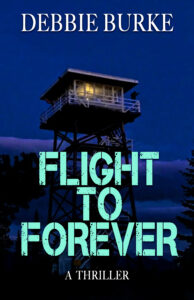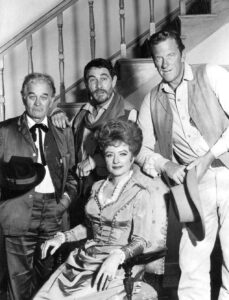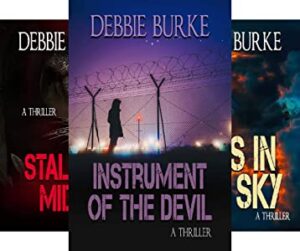
Savings Time Clip Art drawing (Vector cliparts) anousment media,2 pm,time goes by
by Debbie Burke
Is your internal clock still confused by Sunday’s changeover to Daylight Savings Time? Me too. Now is a good opportunity to talk about playing with time in fiction.
In real life, time unfolds in chronological order. We’re born on Day 1, followed by 2, 3, 4, etc. until the last day when life ends.
That chronology can’t be changed.
We’re often Monday-morning-quarterbacks, kicking ourselves for what we did or didn’t do, what we said or didn’t say and should have. We’d love to go back in time to fix wrong choices or bad decisions but the best we can do is learn from them and not repeat mistakes.
In fiction, however, we have a chance for a do-over. It’s called rewriting.
In real life, a perfect comeback usually eludes us at the time but later occurs to us. When that happens in a story, we can simply plug it in when it’s needed. How cool is that!
Manipulating time chronology in mystery fiction can be an effective technique to build tension and suspense, disguise the villain, and misdirect the reader.
Let’s look at two movies that use the time jumping technique. I chose films as examples rather than books because visual models are easy to learn from.
The 2019 film Knives Outi is an unabashed tribute to the immortal Agatha Christie. Rian Johnson wrote and directed the film, which was nominated for an Oscar for Best Original Screenplay. Hercule Poirot is updated as 21st century detective Benoit Blanc (played by Daniel Craig). Wealthy novelist Harlan Thrombey (played by the late Christopher Plummer) is found dead, his throat slashed. A star-studded ensemble cast provides multiple suspects in the suspicious death. Driven by greed and jealousy, they fight among themselves over Thrombey’s fortune.
The complex plot jumps around in flashbacks from the points of view of different characters. Each new revelation of what supposedly happened sends the audience down a fresh trail of misdirection.
Time is critical in determining whose alibi is genuine and whose is false. Suspects claim to be in a certain location at a certain time. Blanc deduces who is lying by pinpointing the exact time where each actually was.
As a writer, I’m curious how Johnson wrote the original draft. Did he write it in chronological order then rearrange scenes during rewrites? Or did he bounce back and forth in time while initially drafting?
Same question about the filming. I’m guessing, for budgetary reasons, it was shot in chronological order because that’s the most efficient use of time and resources. Later, Johnson probably cut and pasted the scenes for the maximum dramatic suspense.
That system works for books also. Once the story is drafted in chronological order, the writer can cut and paste at will, rearranging the time sequence to keep the reader guessing.
A 2023 Czech film, Unspoken, directed by Tomas Masin, is another good example of how to play with chronology. The story concerns a veterinarian whose life changes in an instant when he’s kicked in the head by a horse he’s treating. The accident leaves him partially paralyzed and unable to speak. Three women care for him: his wife, his mother, and the woman who owns the horse, later revealed to be the vet’s lover.
Jealousy and resentmen lead to power struggles among the women. For different reasons, they disagree about how the man should be cared for. He cannot voice what he wants and can only watch helplessly as they argue over his fate.
Two detectives are shown investigating the case. Initially they appear to be focused on who’s liable for the accident. Gradually it comes out they are actually investigating the veterinarian’s death. While the audience watches his struggle at rehabilitation, they also know that ultimately he will not survive.
Time jumps from present to past to future as detectives question the three women and others, including nurses and doctors.
More layers unfold as it’s revealed the man managed to attempt suicide but was saved. Fingers of blame are pointed at professional caregivers as well as the three women. Who allowed the attempt to happen?
Then in yet another jump forward in time, it’s revealed that, shortly after trying to kill himself, the man was murdered.
The detectives’ questions dig farther back in time into the murky relationships he had with his wife, mother, and lover. The lover is now discovered to be the mother of his young child.
Each jump in time adds to the mystery.
The cause of death is a fatal dose of insulin injected into his IV. The time of death is determined to be a brief window when the man’s squabbling wife, mother, and lover all had access to the IV. Which one did it? Or did a doctor or nurse make an error? Or did someone decide to end his suffering with a mercy killing?
I won’t spoil the surprise ending. The film is available on a free streaming channel. It’s worth watching to study how effectively time jumps can be used.
If you decide to experiment with time, keep a detailed chronology.
- Account for each day, hour, or minute.
- Use a physical calendar or writing software.
- Note each character’s location at the time of each important plot event or action.
A side note on chronology: this post focused on the big picture handling of chronology at the plot level. However, on the micro level, sentence chronology is also important.
With my editing clients, I frequently see sentences and paragraphs that are awkward and clunky due to chronological confusion.
Here’s an example:
“Why the sour face?” Frank asked when he came in the door after Maureen and the kids had finished dinner just before she would tuck them in for their 9 p.m. bedtime. Frustration had made her break a plate while washing dishes. Beer fumes wafted from him.
What’s wrong? The words are clear enough, but they are not arranged in the order that the actions happened. The focus of the paragraph—the reason for Maureen’s anger—gets lost as the reader has to figure out who’s done what and when they did it.
Sentences and paragraphs read much smoother when they’re written in chronological order.
Rewrite:
Maureen and the kids had given up waiting for Frank to come home and ate dinner without him. While washing dishes, Maureen cracked a plate, stifled a curse, and chided herself. Not in front of the children. She was herding them toward bed at 9 p.m. when the kitchen door opened. Frank stumbled in, beer fumes wafting from him. He shot one look at Maureen and asked, “Why the sour face?”
Writers often like to use dialogue to make a dramatic statement, so they start a new scene with a character speaking. Then they have to backtrack to explain when, where, and why the character made that statement. The context eventually becomes clear but, meanwhile, the reader struggles to mentally rearrange the sentence in chronological order.
That’s a speed bump.
If speed bumps happen too often, the reader gets tired of them and doesn’t finish the book. They may not even be aware of what bothered them. They only know the writing irritated them.
The cleanest, clearest way to construct sentences and paragraphs is chronologically. A happens then B happens, then C, D, E, etc. The reader instantly understands what’s going on and can focus on the story.
Back to the big picture view of time manipulation: Personally, I write in chronological order. Occasionally, I use a flashback to explain what’s occurring in the present story. If I played around with time too much, I’m afraid I’d get totally confused.
However, I admire books and films like Knives Out and Unspoken. The authors who played with timelines have a deep understanding of the plot’s forward momentum. They use time rearrangement to build suspense and tension. When done well, out-of-order chronology can be a fresh way to present a story.
~~~
TKZers: have you ever played with time in your stories? Were you satisfied with the results? Or did it wind up an incomprehensible jumble? Any suggestions?
~~~
Time to try a new series? Please check out Tawny Lindholm Thrillers, available at Amazon and other online booksellers.




 The sixth book in my series,
The sixth book in my series, 

 To follow series characters who age more slowly than the calendar, please check out
To follow series characters who age more slowly than the calendar, please check out 